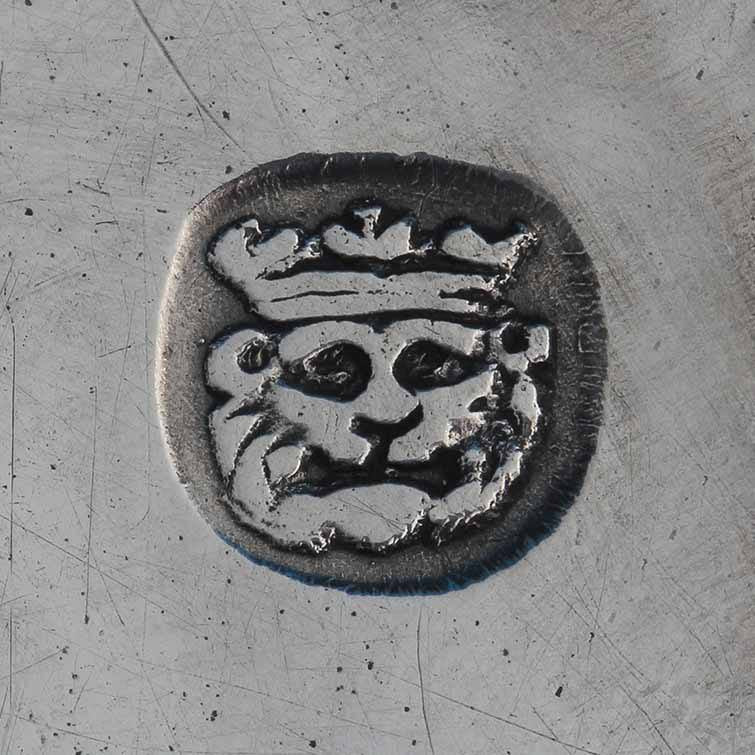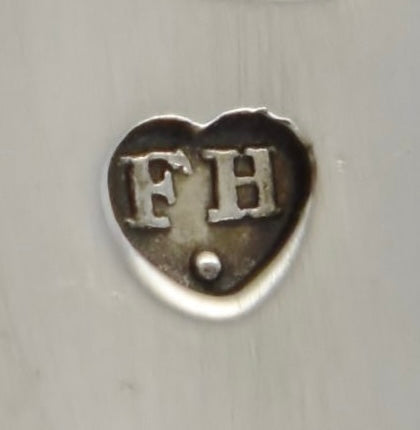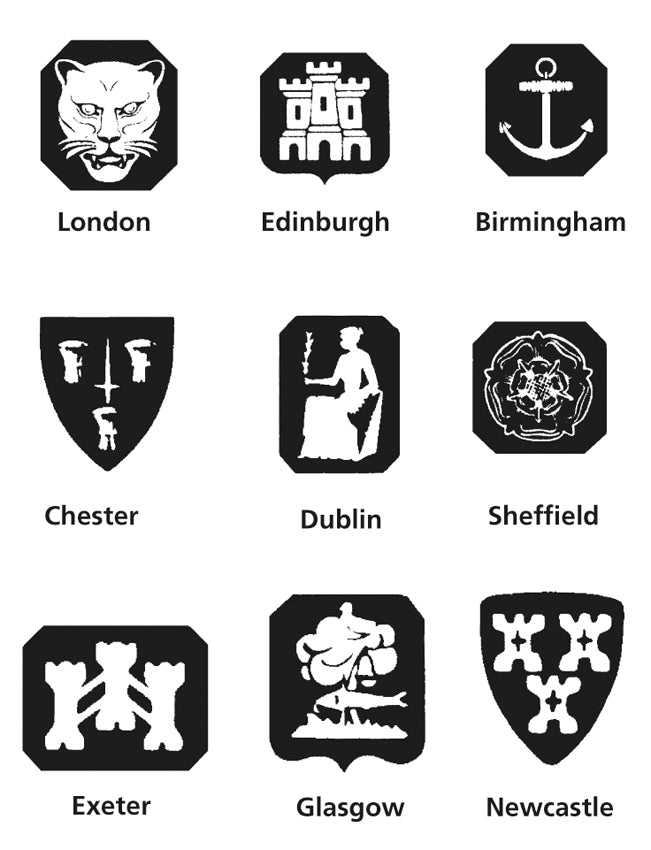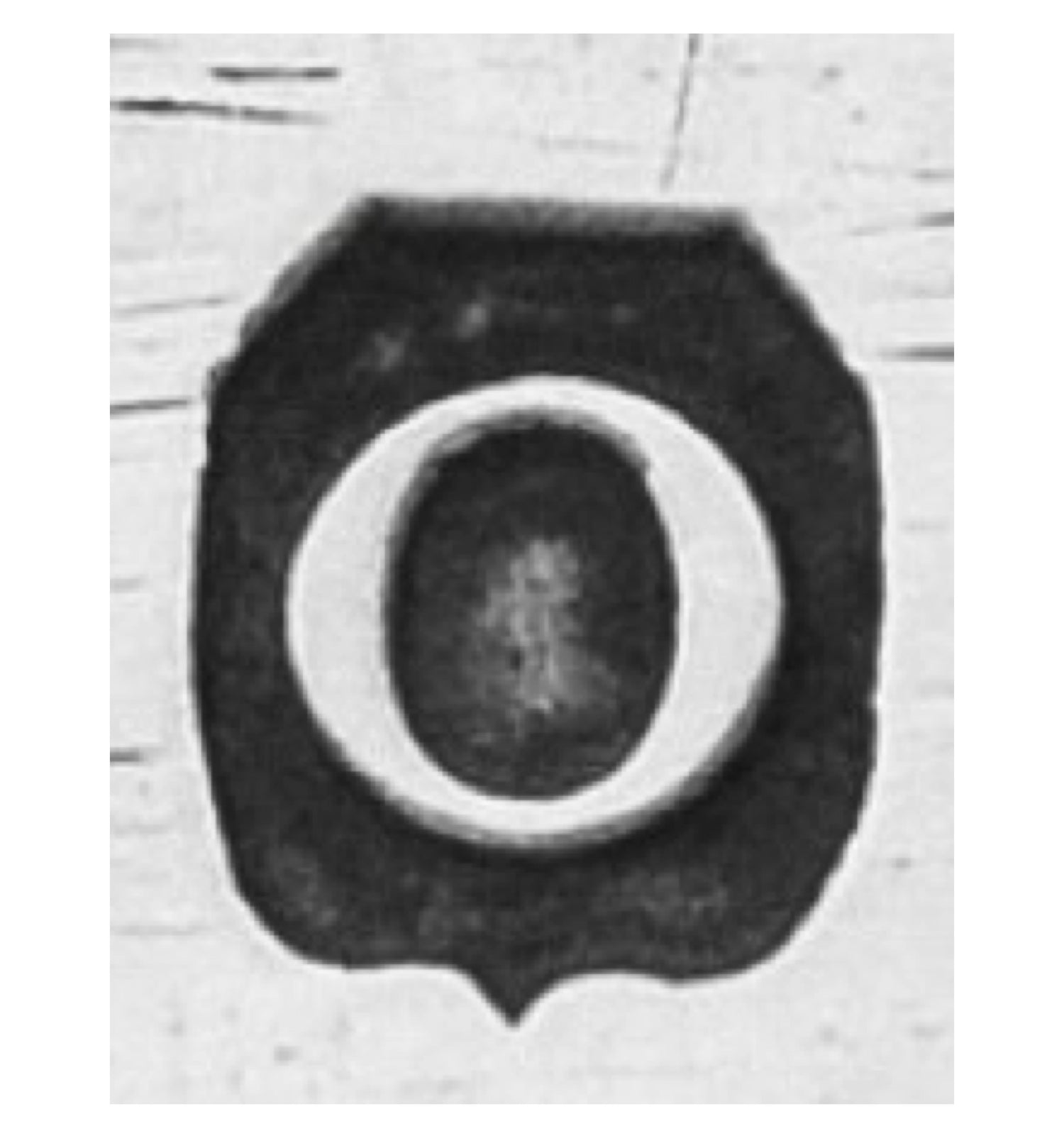The British Hallmark System
The British Hallmark system guarantees the authenticity, purity, maker and age of an item.
This hallmarking system, combined with the high quality and prolific output of British silversmiths, has made British silver the most collected silver in the world.


CROWNED LEOPARD'S HEAD
The Crowned Leopard's Head, is the first hallmark, introduced in 1300 as the Kings mark of authentication was implemented to protect and preserve the standards of Silverware and Gold. The original Leopards Head depicted the three lions in passant on the Royal Arms. It was first altered in 1478 when a crown was added to distinguish between articles marked before and after this date. During this time, the Goldsmiths Company appointed their first common Assayer, who silversmiths were required to bring their works to for hallmarking after completion.

THE MAKERS MARK
In 1363, a new law mandated that all silver items must also bear a Maker’s Mark. A record of all makers and their marks was maintained at the Goldsmiths' Hall, allowing any substandard sterling item to be traced back to its maker.
This is the makers mark for Francis Higgins, a hugely important firm of spoon and fork manufactures who can trace their history back to the late 18th century.

THE TOWN MARK
The exact origin of marking items with a 'town mark' is unclear, but a law passed in 1423 mentions seven assay towns besides London. This suggests that by then, town marks were in use, with the leopard’s head mark indicating both the sterling standard and that the item was assayed at the London office.
Before travel became affordable and convenient, numerous assay offices were scattered across Britain to allow silversmiths to hallmark their goods. Over time, these smaller provincial offices closed down.
Currently, the only remaining assay offices for hallmarking are in London, Birmingham, Sheffield, Edinburgh, and Dublin.

THE DATE LETTER
In 1697 the monarch changed legislation, and what we refer to now as the date letter appeared on British silver. The example shown here is the London date letter 'O' for 1789.
Date letters follow the sequence of the alphabet, using different lettering styles for different towns and changing every 25 years. This makes it possible to differentiate between the the different time periods items were made.